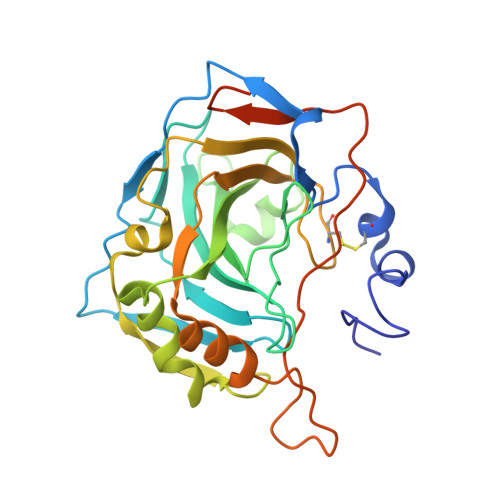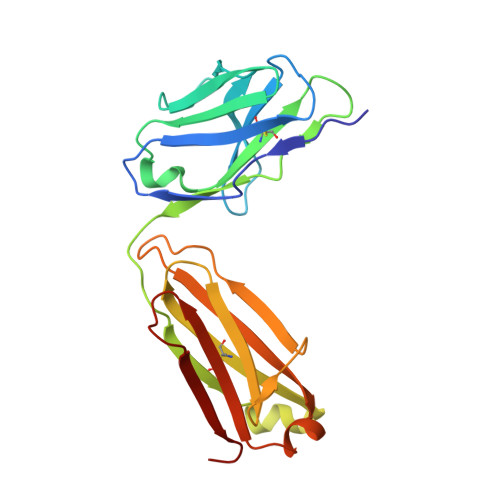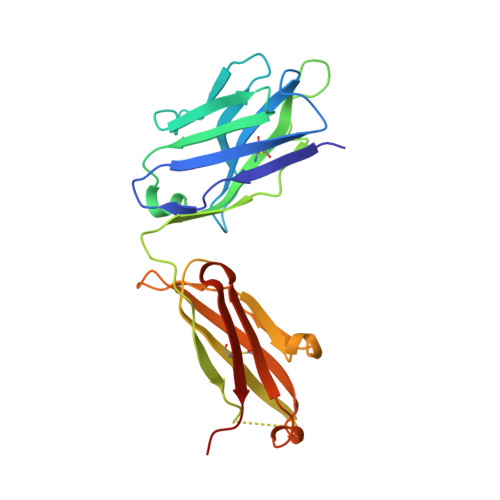Biochemical and Structural Insights into Carbonic Anhydrase XII/Fab6A10 Complex.
Alterio, V., Kellner, M., Esposito, D., Liesche-Starnecker, F., Bua, S., Supuran, C.T., Monti, S.M., Zeidler, R., De Simone, G.(2019) J Mol Biol 431: 4910-4921
- PubMed: 31682835
- DOI: https://doi.org/10.1016/j.jmb.2019.10.022
- Primary Citation of Related Structures:
6RPS - PubMed Abstract:
6A10 is a CA XII inhibitory monoclonal antibody, which was demonstrated to reduce the growth of cancer cells in vitro and in a xenograft model of lung cancer. It was also shown to enhance chemosensitivity of multiresistant cancer cell lines and to significantly reduce the number of lung metastases in combination with doxorubicin in mice carrying human triple-negative breast cancer xenografts. Starting from these data, we report here on the development of the 6A10 antigen-binding fragment (Fab), termed Fab6A10, and its functional, biochemical, and structural characterization. In vitro binding and inhibition assays demonstrated that Fab6A10 selectively binds and inhibits CA XII, whereas immunohistochemistry experiments highlighted its capability to stain malignant glioma cells in contrast to the surrounding brain tissue. Finally, the crystallographic structure of CA XII/Fab6A10 complex provided insights into the inhibition mechanism of Fab6A10, showing that upon binding, it obstructs the substrate access to the enzyme active site and interacts with CA XII His64 freezing it in its out conformation. Altogether, these data indicate Fab6A10 as a new promising therapeutic tool against cancer.
Organizational Affiliation:
Istituto di Biostrutture e Bioimmagini, CNR, Via Mezzocannone 16, Naples, 80134, Italy.





















